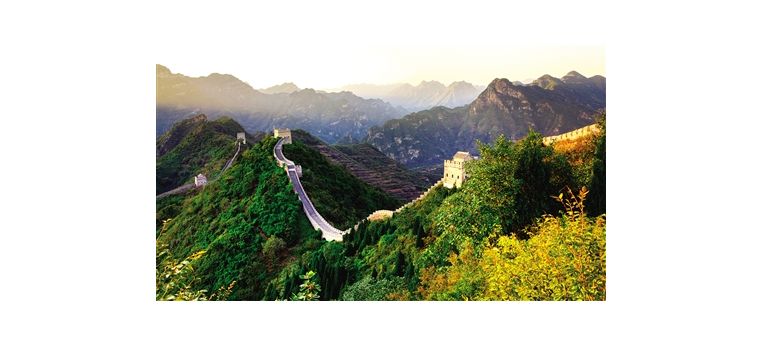
Huangyaguan Great Wall is considered to be a miniature of the Great Wall of China. In this section, you can find the stone base built in the Northern Qi Dynasty (550 - 557) and the brick battlements laid in the Ming Dynasty (1368 - 1644). Watchtowers there are either solid or hollow, and have different shapes, including round ones and square ones. Outside, you may see independent outposts a few meters away from each other; inside, there are also ramparts to reinforce the defense system.
Basic Facts of Huangyaguan Great Wall
1. Huangyaguan Pass was first built during the Northern Qi Dynasty and repaired extensively during the Ming Dynasty under the supervision of Qi Jiguang, a renowned general of that time.
2. Stretching 42 kilometers (26 miles) from the General Pass in Beijing to Malan Pass in Hebei, there used to be 52 watchtowers and 14 beacon towers in total. However, most of this part of the wall has collapsed due to lack of renovation. Starting from 1984, people spent three years repairing 3,025 meters (3,308 yards) of the wall and 20 watchtowers.
3. Because the cliff rocks to the east of the pass are mostly yellow and they look gilded at the sunset, the pass got its name Huangya (Yellow Cliff) Pass.
The Pass of Huangyaguan
Surrounded by abrupt mountains, Huangya Pass is one of the most important passes with barbicans, turrets, emplacements, barracks and other indispensable military facilities orderly arranged. Within the pass, more than 40 crisscrossing streets form the shape of the Eight Diagram, which gives the pass a nickname, Eight Diagram Fortification City. In the center of the Eight Diagram Street block is the Huangyaguan Great Wall Museum, which used to be the Dispatcher's Office in the Ming Dynasty. Here, you can have a look of the weapons and daily necessities used by soldiers of the Ming Dynasty. Besides the constructional sites, you can also feel the cultural atmosphere by viewing poems inscribed in the Stele Forests and couplets carved on the bamboo strips in the Couplet Hall.
Huangya Water Gate
Built during the reign of Ming Emperor Yongle (1403 – 1424), this pass connects the Huangya Pass on the west and Taiping Mountain Stronghold on the east. With a length of 75.5 meters (83 yards) and a height of 12.5 meters (41 feet), there are five arches below the wall allowing the river to flow through. During the wartime, the arches would be closed, and soldiers would settle gun barrels along the battlements to defend against enemies coming from the waterway. In ordinary days, it was just like a giant bridge over the river.
Taipingzhai
It is 1,000 meters (1,100 yards) east of the Huangya Pass in the Xiaopingan Village, guarding the valley of that region. There is a statue of Qi Jiguang standing in front of it, commemorating this eminent general who made great contributions to the state.
Widow Tower
To the west of Taiping Stronghold stands a square tower named the Widow Tower, which is a two-storey beacon tower donated by twelve women whose husbands helped to build Huangyaguan Great Wall but lost their life during the construction. It functioned as a military fortress during the wartime with crenels and emplacements built on the second floor. It is also a piece of architectural artwork worth a close viewing. You can find dragon's head sculptures on two sides of the roof, and figurines of kylins, phoenixes, and lions crouching at the four points of the eave.
Huangya Sky Ladder
Walking westward for 503 meters (550 yards) from the Huangya Pass, you will get to the steepest segment of this section, the Huangya Sky Ladder. Stairs there are not very smooth. Some of them even crack in the middle. Stretching to the top of the ridge, this long stairway seemingly leads to the sky. Climbing over the ladder, you will reach the primitive Great Wall built in the Northern Qi Dynasty, marking the end of the Huangyaguan section.